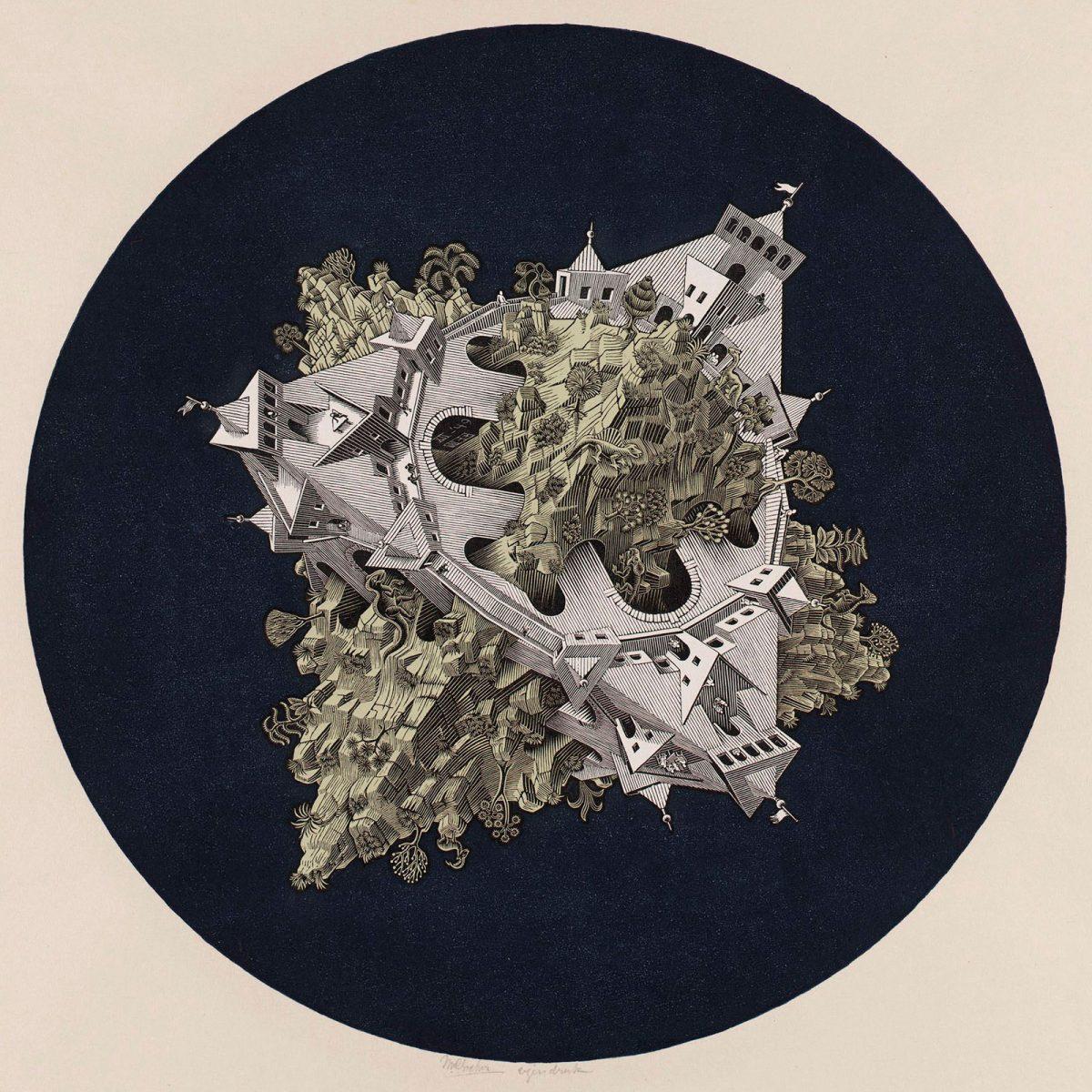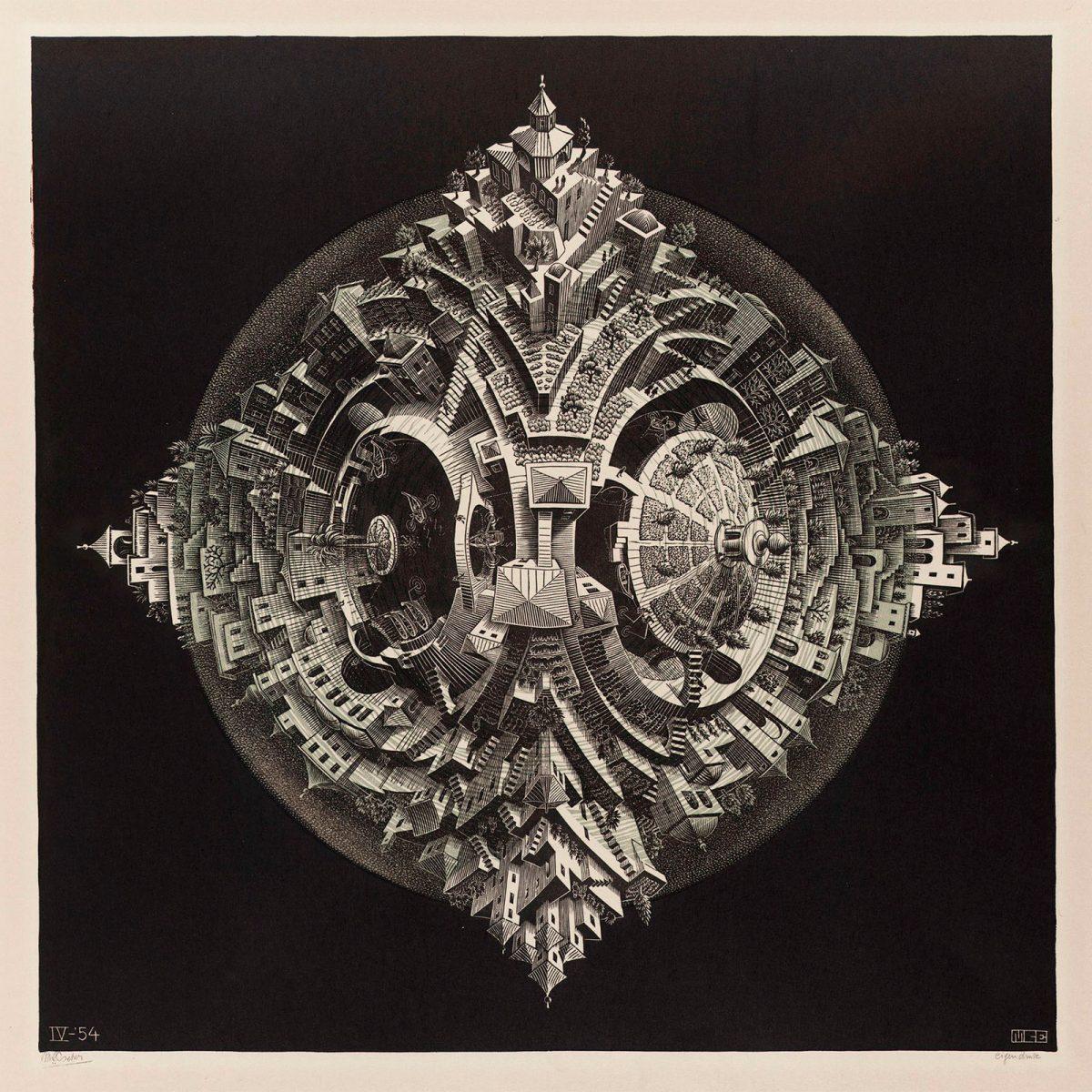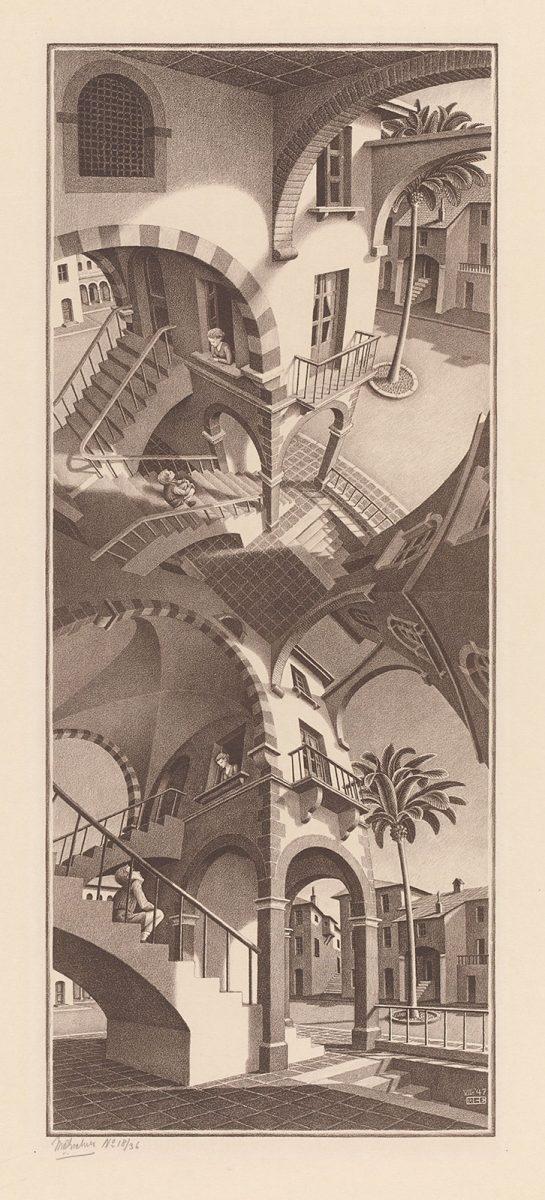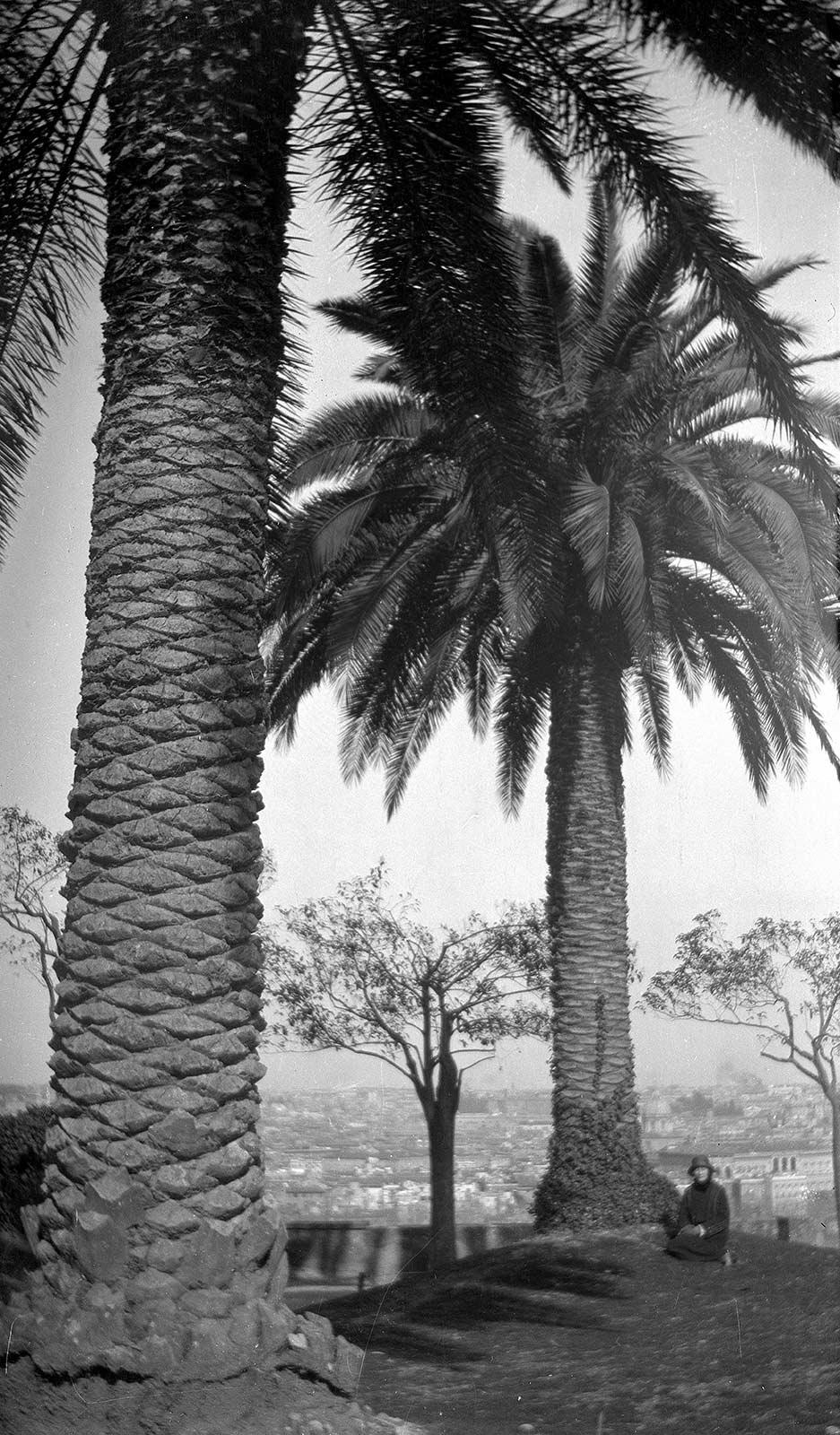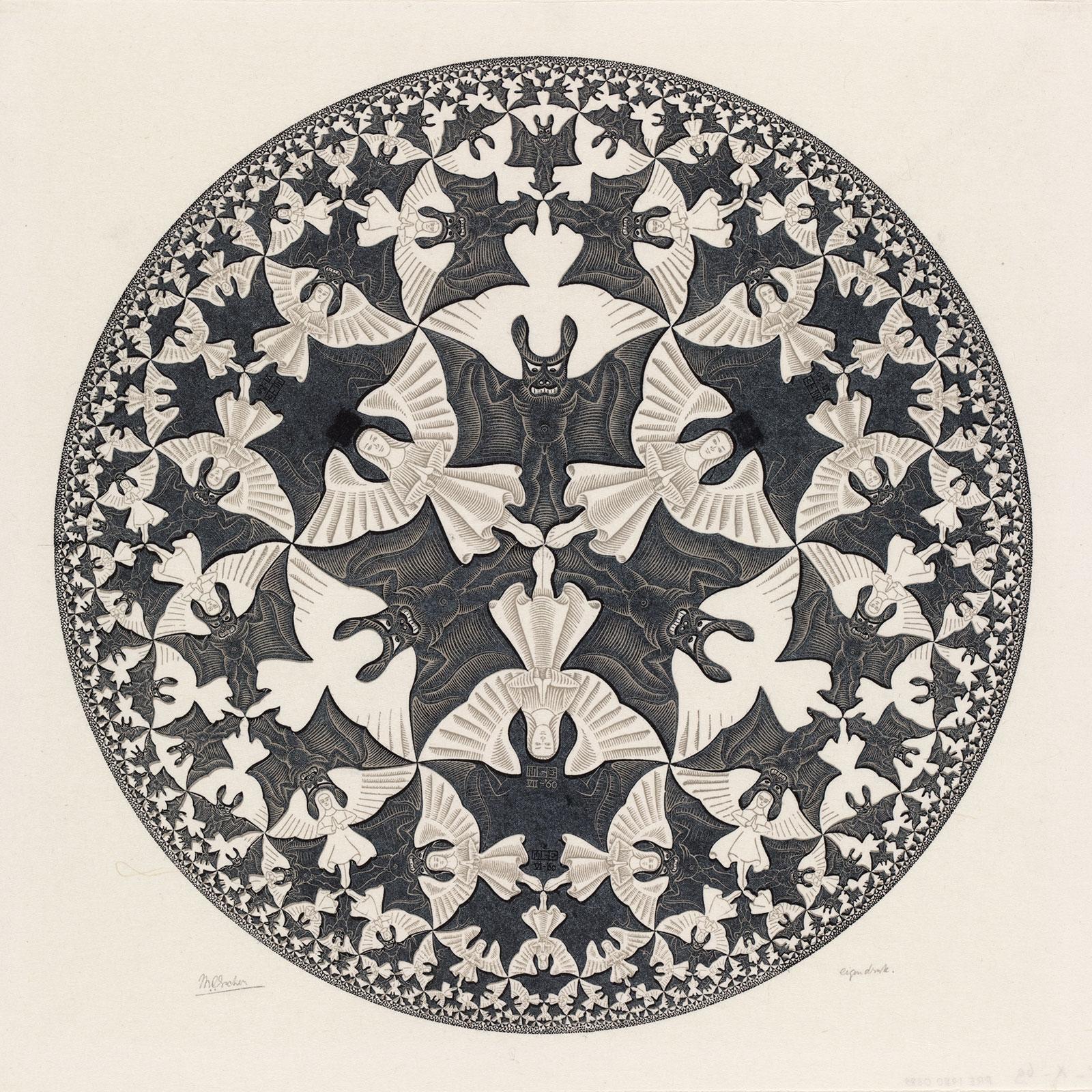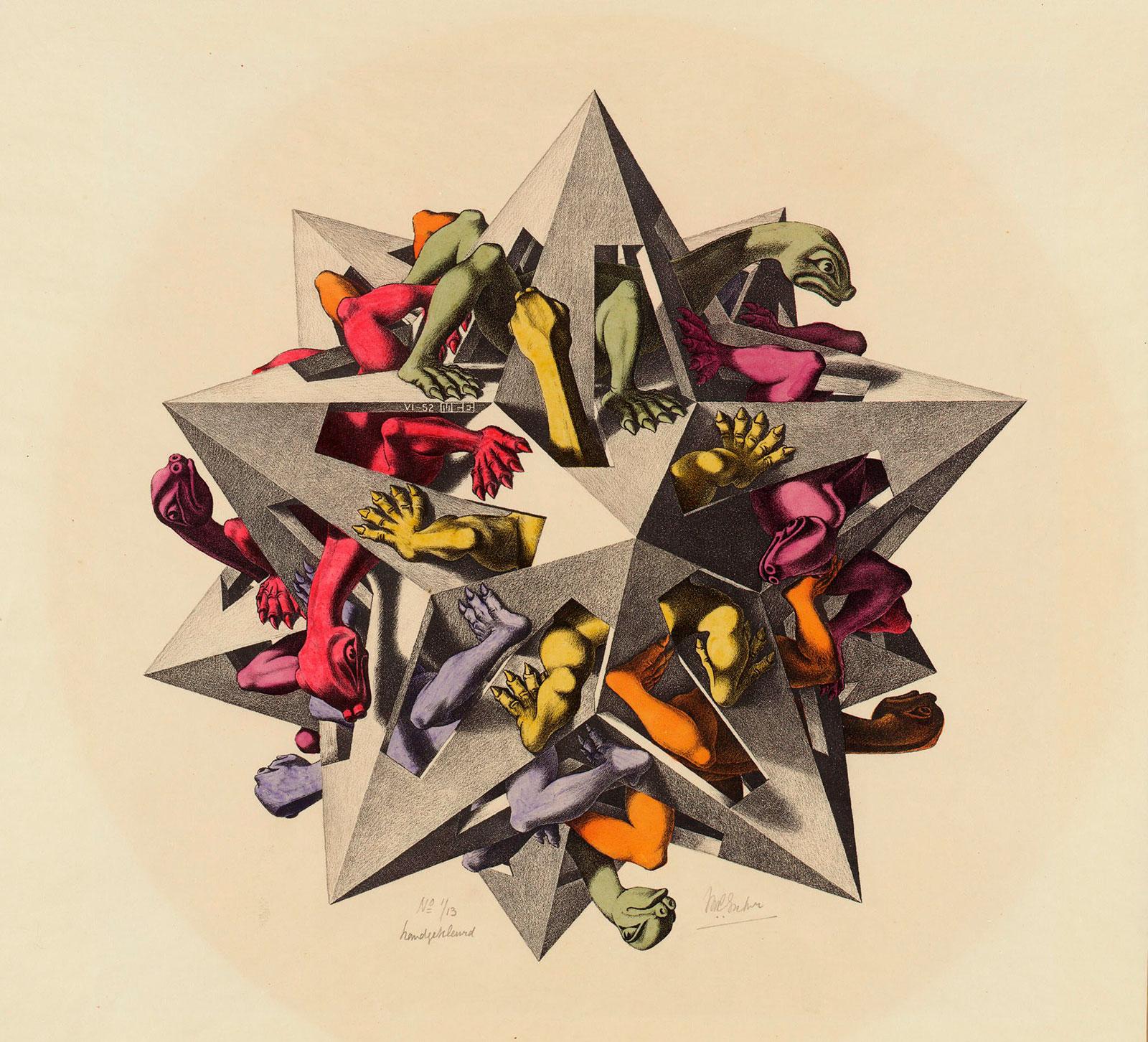There are also a number of drawings and preliminary studies in which he practices with the tree. But besides the palm tree as a subject, the tree also features several times as a visual element in his graphic work. The tree pops up behind a house near Nunziata, it rises into the frame next to the house in Dusk (Rome), it adorns the boulevard in Calvi, Corsica and two are present in his famous print Up and Down. The emblem he created for restaurant Insulinde includes several small palm trees, and palm trees constitute a recognisable element in his beautiful fictional populated worlds in Double Planetoid and Tetrahedral Planetoid, which lends these planets an earthlike quality.
It is probable that it was the exotic character of the tree that appealed to him. There were hardly any palm trees in the Netherlands. Something similar happened with aloe, a fleshy plant with pointed leaves which was perhaps even more exotic. He depicted it several times too, like in Tropea, Pentedatillo and Belvedere. In the version from 1933, both plants are combined. Two aloe plants flank the palm tree, lending the print not only something of the wild and natural, but also something very symmetrical and stylised. Escher must have felt drawn to the palm tree’s symmetry.
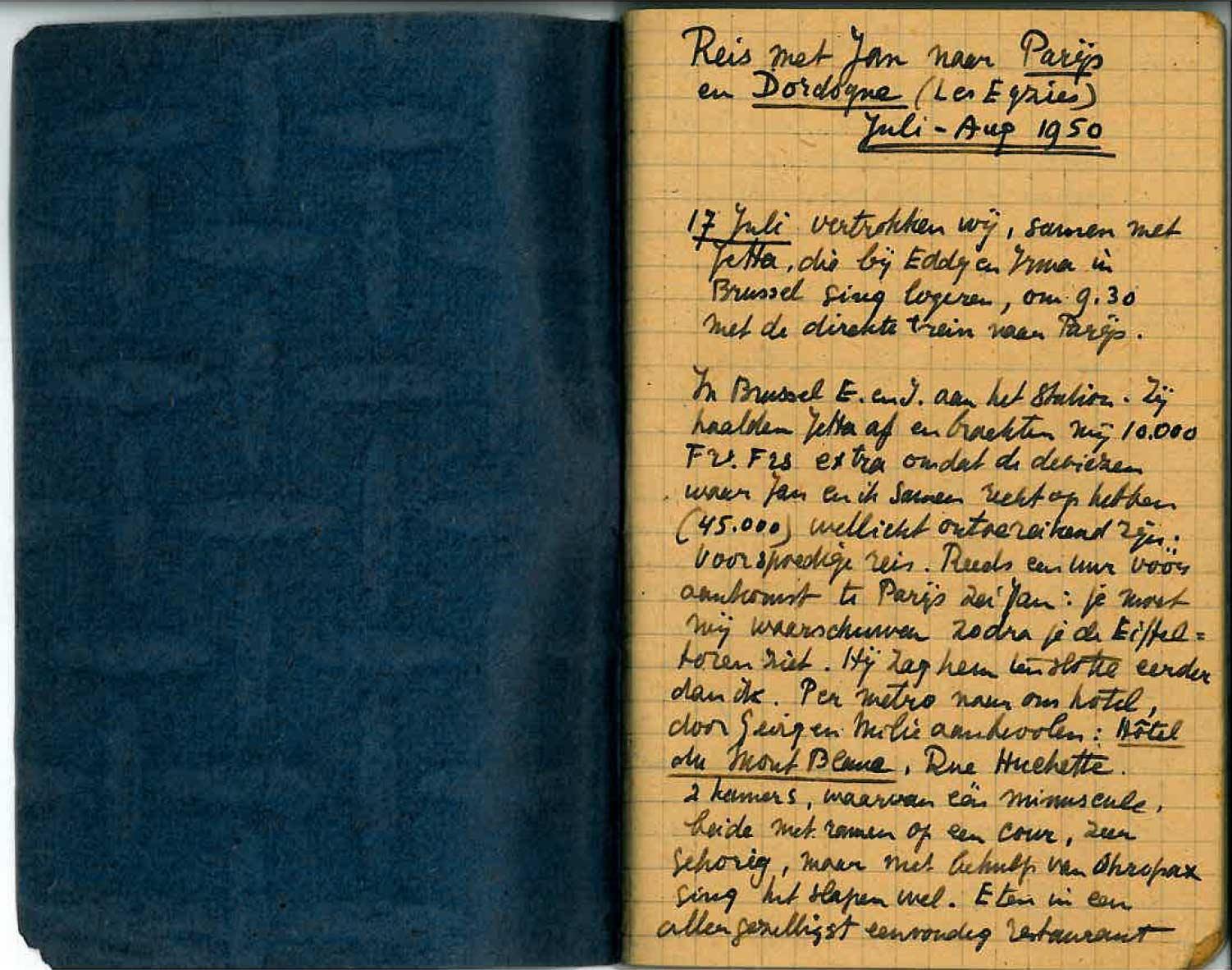




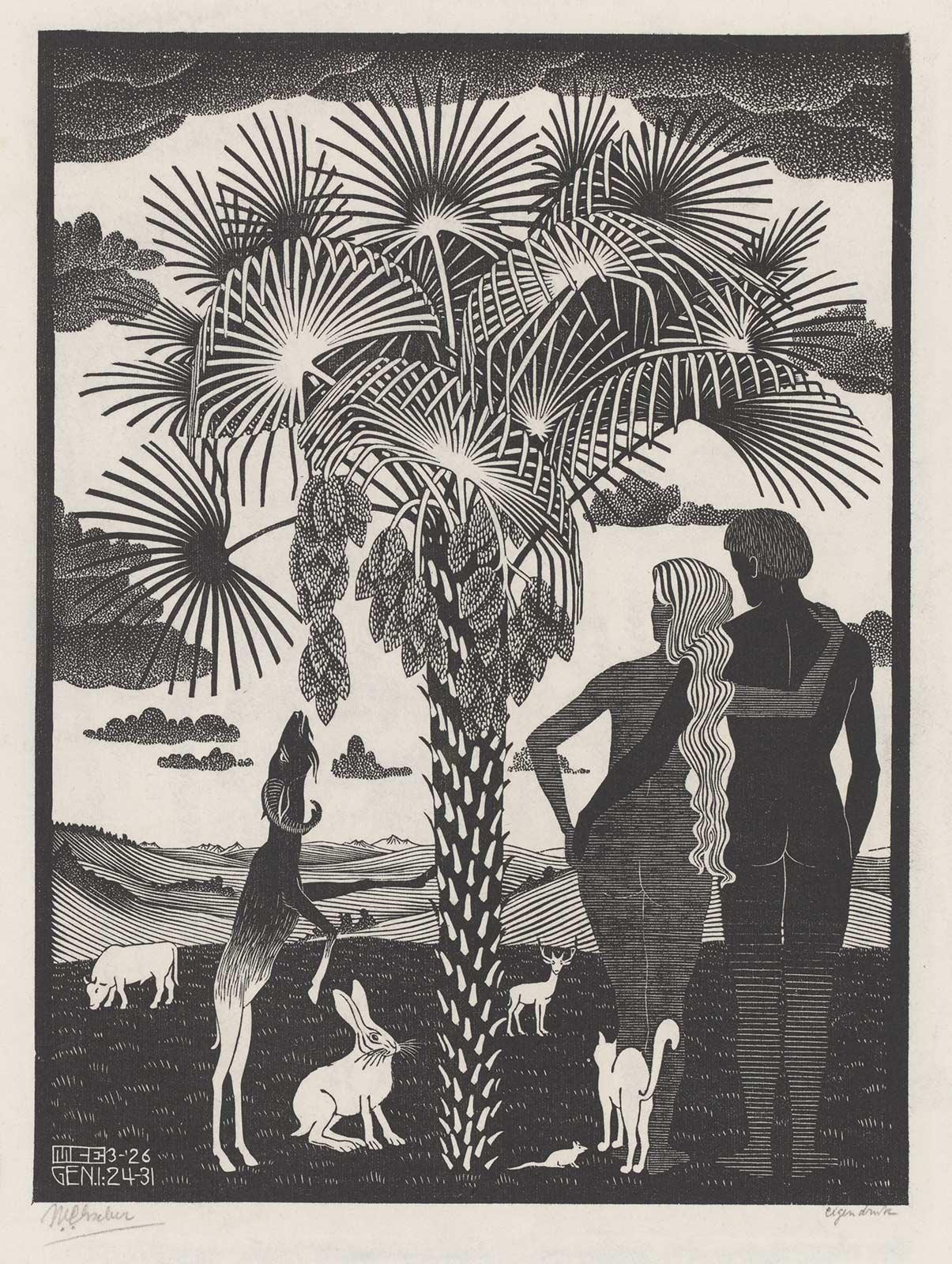







![M.C. Escher, Calvi (the Fishing Town [Seen] from the Citadel), Corsica, wood engraving, December 1933](/_next/image?url=https%3A%2F%2Fprdzoomst01.blob.core.windows.net%2Fescher-production-silverstripe-assets-public%2FUploads%2FImageBlock%2Fcalvi-visserstad-vanuit-de-citadel_cat241-e1599045965613.jpg&w=1920&q=75)

